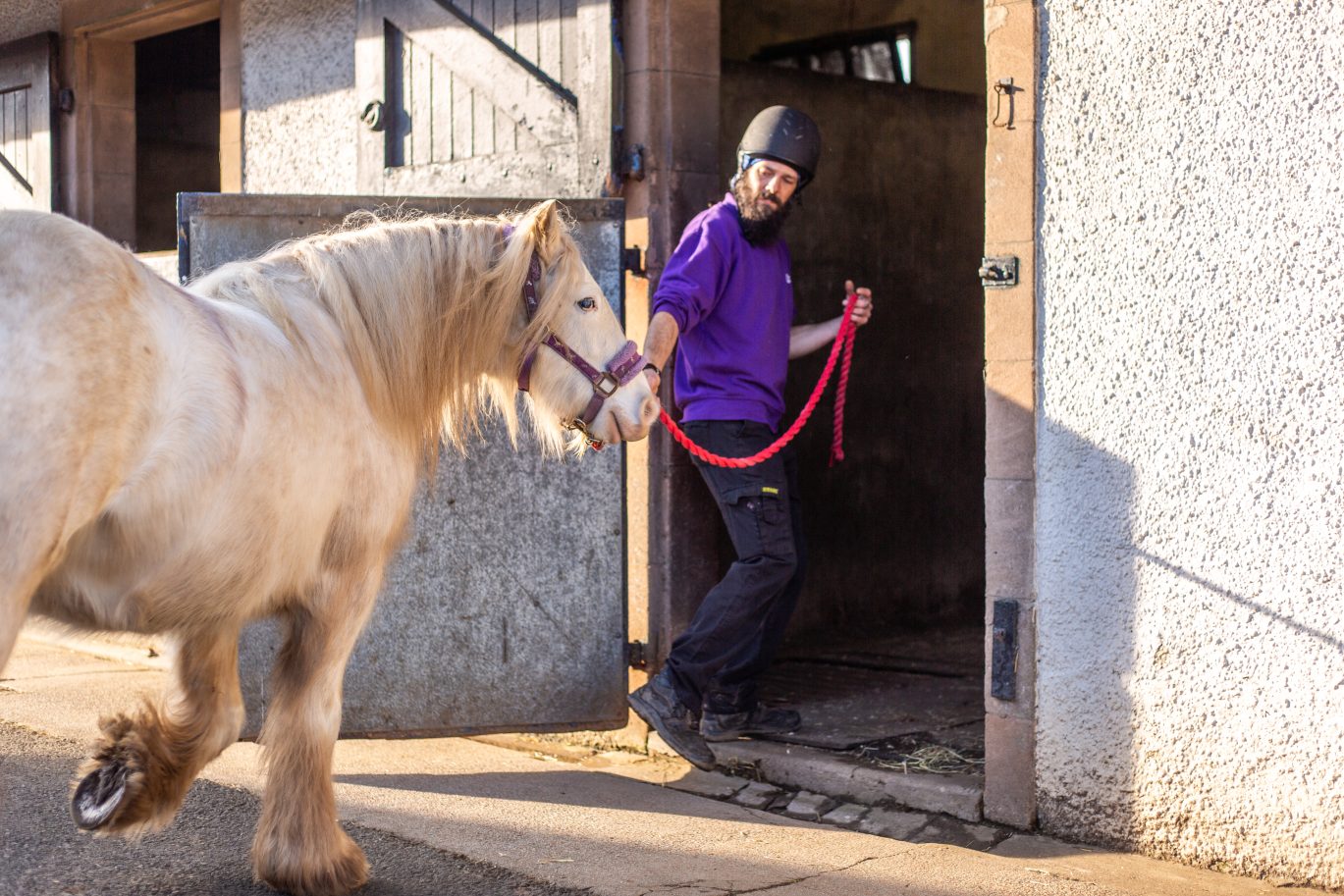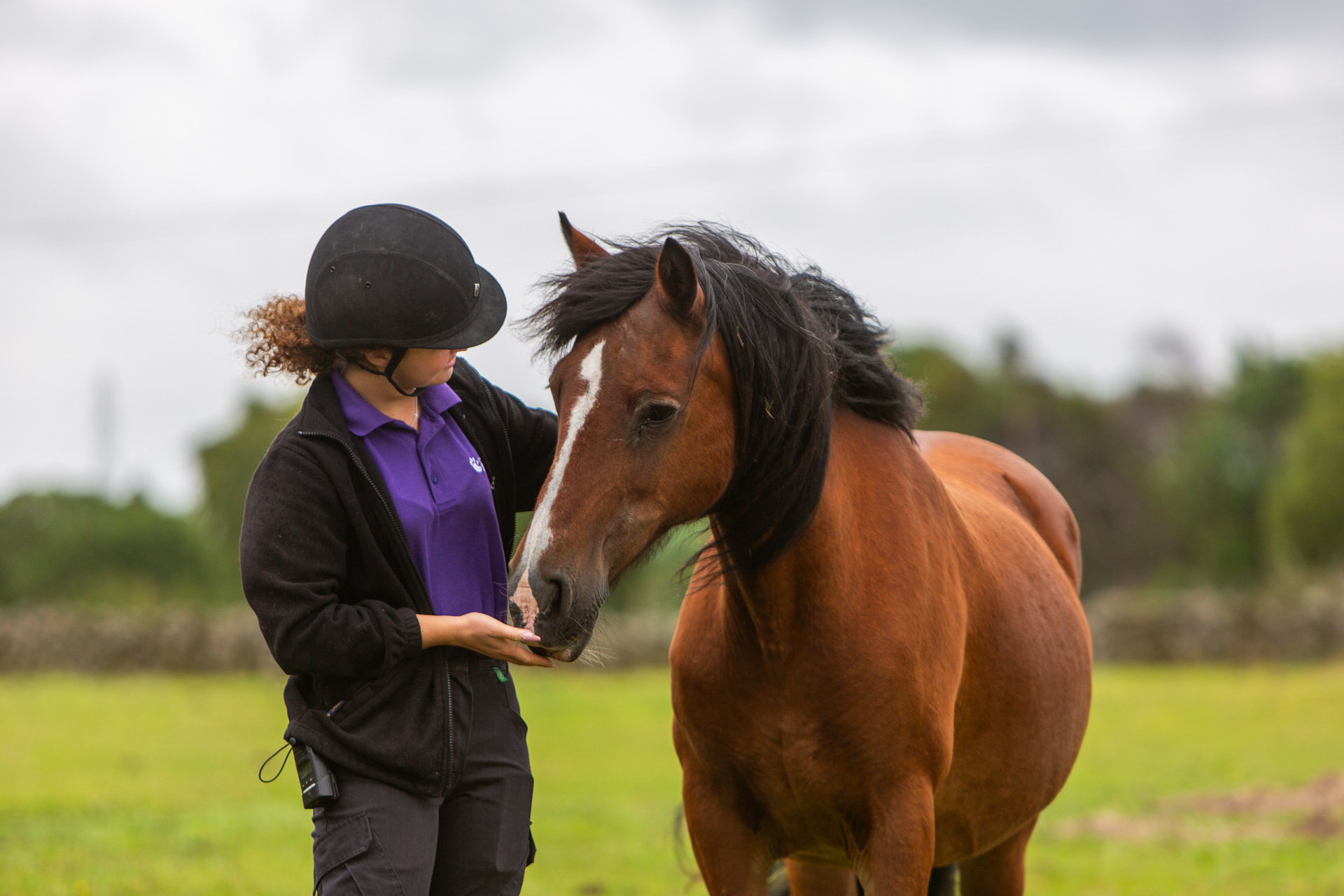
Horse
Horses can live over 30 years old. Scroll down to see our advice on how to make your horse happy and healthy.
Costs
Horses can vary greatly in price depending on their age, their size and their type. Whether you decide to adopt or buy a horse, there will always be costs to consider.
Equipment & tack
To look after your horse well, you will need equipment such as feed and water buckets, hay nets and winter rugs.
When handling your horse, you will also need to have tack. This includes saddles, stirrups, bridles, halters, reins, bits, head collars, lead rope, harnesses, martingales and breastplates.
Keep in mind that horses can live for 30+ years, so it’s important to consider the entire budget when deciding if a horse is the right pet for you. Here is a guide of estimated ongoing costs:
Insurance & public liability insurance
- £35 – £100 per month for insurance to help cover vet costs
- Public liability insurance. However, this won’t cover yearly vaccinations and teeth checks which can cost up to £150
Farrier care
We suggest budgeting up to £90+ every six to eight weeks for shoeing. The exact timings and costings may vary depending on your particular horse and their individual needs.
Feeding and bedding
- Bales of hay – £45 to £80
- Bales of straw – £32 to £132
- Shaving bales – £22 to £76
- Good quality feed – Approximately £36
Livery costs
The cost of a livery can vary between around £80 to £900 per month, depending on the type of livery and services.
Whilst there may be certain factors that change the costs, it’s important to never cut costs when investing in the health and wellbeing of your horse.
If you are unable to afford the full cost of looking after a horse, please consider alternative options. For example, some yards offer the ability to part-loan a horse on a monthly basis where you can look after another person’s horse, however the original owner is still responsible for the livery costs and vet bills.
Time, effort and retirement planning
It’s not just the cost you’ll need to consider when getting a horse – it’s the time. How much time depends on the type of livery you choose as there are certain types of livery that may offer certain services to help you care for your horse.
Horses can live up to 30 years, so when a horse reaches the end of their natural working life or becomes unrideable, you will need to have a retirement plan in place. Elderly horses often involve specialist care to keep them comfortable through progressive ailments that come with age.
Where to get a horse from
If you’re a first time owner, it may not be suitable for you to adopt a rescue horse. These horses have likely come from welfare cases so may need a degree of rehabilitation work.
Reputable sellers will want prospective buyers to know as much as possible about the horse to make sure they go to the right home. Consider doing the following:
- View the horse more than once
- Complete activities with the horse that you plan to do, such as jumping or hacking
- Ask for a trial period
- Arrange a pre-purchase veterinary examination before proceeding
- Always be wary of scams and make sure you’re absolutely satisfied about all elements of the sale
For more experienced owners looking to buy a horse, please consider adoption instead. We have lots of horses and ponies waiting to be adopted – from an established ridden horse to non-ridden companion horses.. Find a horse in need of a loving, experienced home today.
Environment
To ensure they stay happy and healthy, horses need plenty of room to exercise outside and have access to suitable shelter.
When outside:
- Check fences are in good condition and escape-proof. Check the area is hazard free by removing anything that may cause them damage, including toxic plants.
- Every horse should have access to a paddock where they can exercise every day, in the company of other horses.
- There should be shelter from the sun, wind and extreme temperatures in the paddock. They should also have access to dry areas to stand and lie down on.
When inside:
- All areas in the stable should be well-ventilated, clean and draught-free.
- Make sure they have good quality, dust-free bedding to lie on, which should be kept clean.
Please be aware that horses can become ill or show abnormal behaviour if confined to a stable for long periods.
Things to consider when transporting your horse:
- Transport can be a very stressful experience for horses, so if you do need to move your horse, make sure the vehicle is comfortable and safe at all times.
- Ensure the size of any place you leave your horse in places like a trailer or a horsebox is big enough to hold them, and make sure it’s a comfortable temperature.
Introducing your horse to other horses
Horses love to be around other horses! Horses are social creatures: however, introducing your horse to other horses still requires careful consideration. Here is our advice on how to introduce your horse to horses that they haven’t met before:
- Introduce them carefully
Watch them carefully to make sure they’re not the target of too much aggression. Unfamiliar horses may squeal at, threaten, bite or kick each other when first introduced. - Give them enough space
You should give your horse enough space to allow them to get away from others and avoid being cornered. Check the horses for signs of injury more frequently than normal during this initial period. - Let them see their neighbours
The horses should be able to see and interact with their neighbours. However, if they don’t get on well with each other, do not force them to interact. Avoid putting them next to each other in the stables or in the same paddock. - Be careful not to isolate your horse
Give your horse as much time as possible in paddocks to interact freely with others. Isolation can cause your horse a lot of stress and in turn, lead to abnormal behaviour. Ensure the size of any place you leave your horse in places like a trailer or a horsebox is big enough to hold them, and make sure it’s a comfortable temperature.

A warning against Strangles
Strangles is one of the most common infectious diseases diagnosed and can affect any horse. Here’s what you need to know, from the symptoms to watch for, to how to prevent your horse from being affected.
Find out more